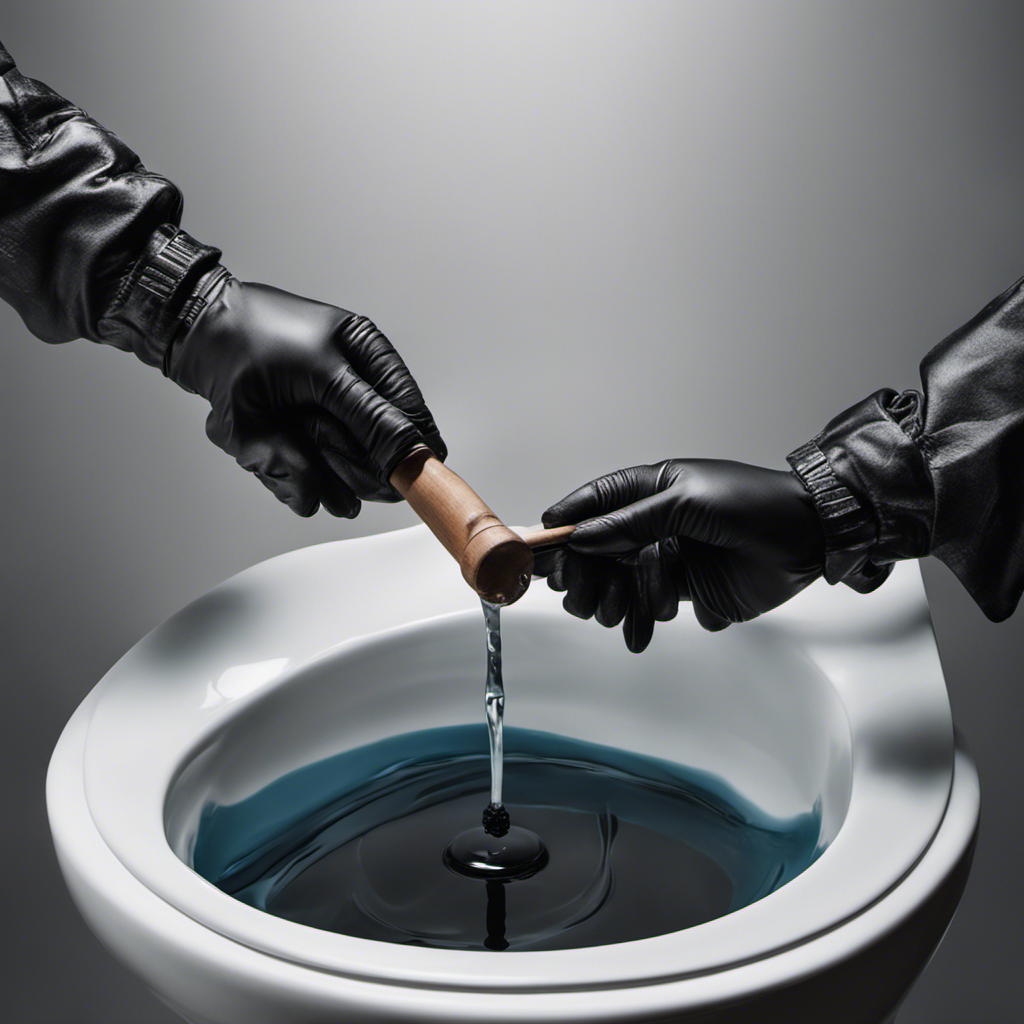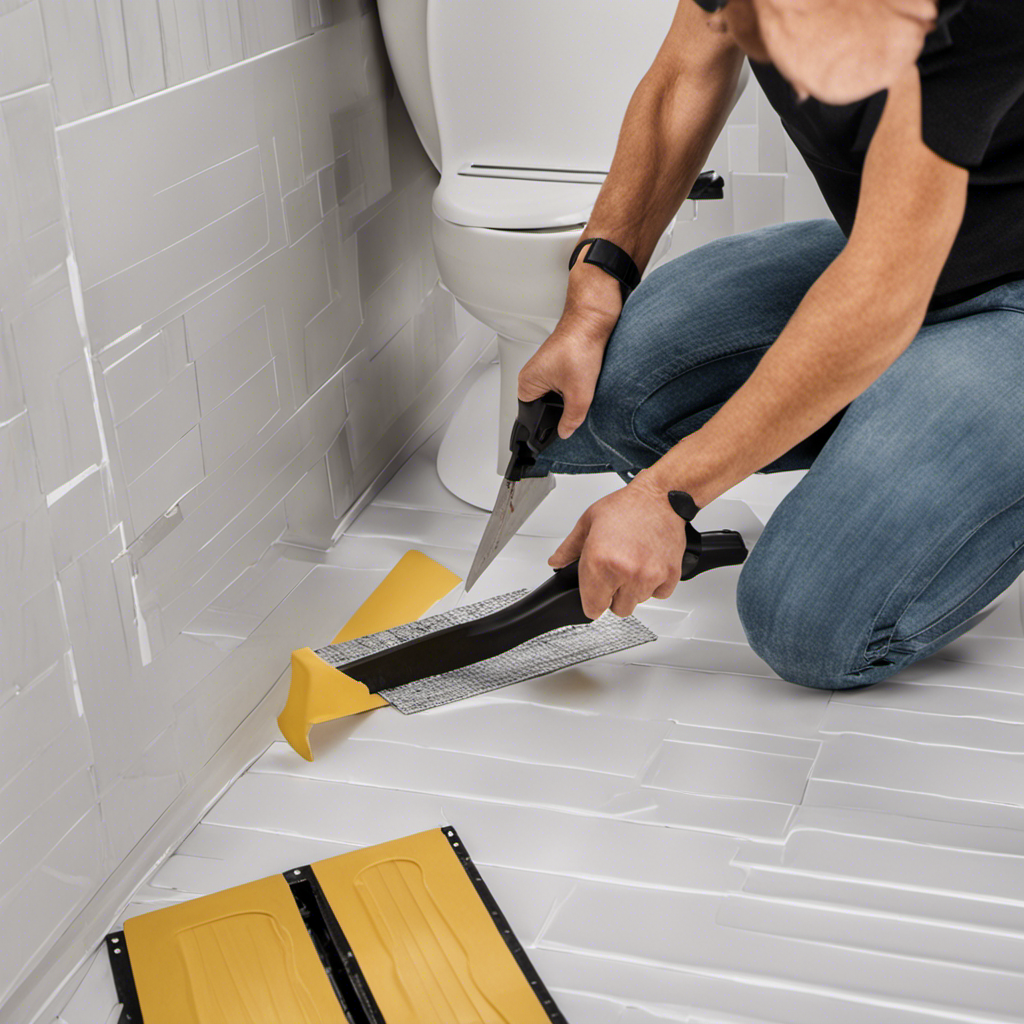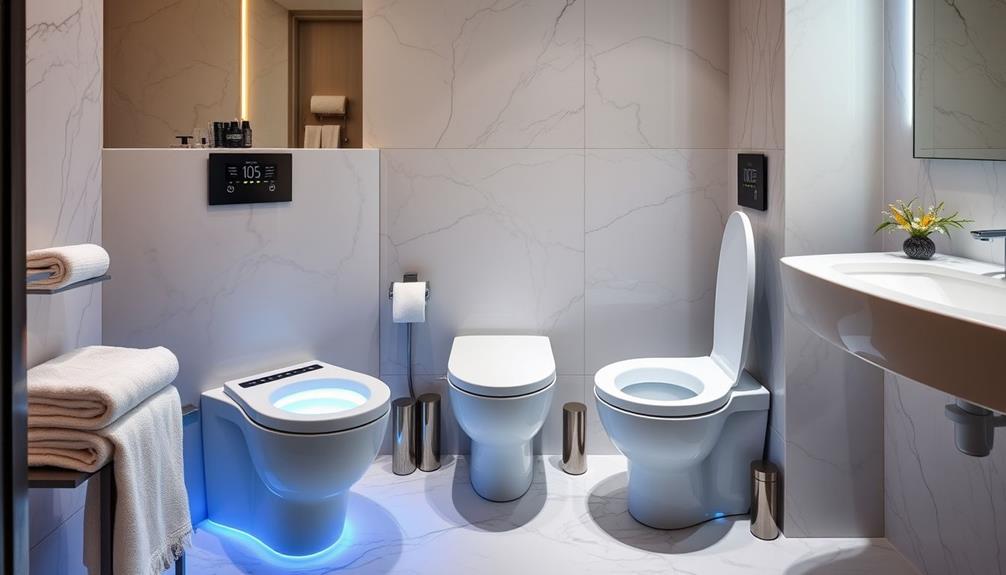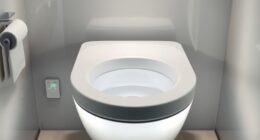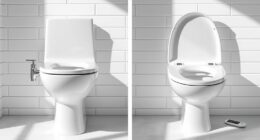Have you ever found yourself in a panic, wondering how on earth you can retrieve something from the toilet after it’s been flushed? Don’t worry, we’ve got you covered!
In this article, we’ll walk you through the steps and techniques you can use to safely and effectively recover your prized possession. From assessing the situation to dealing with potential blockages, we’ll provide you with the knowledge and tools you need to tackle this unfortunate mishap head-on.
So, let’s dive in and get that item back where it belongs!
Key Takeaways
- Visually inspect the toilet for visibility of the object and determine if it is reachable.
- Use caution and proper protection when handling potentially contaminated objects.
- Try methods like using a plunger, wire hanger, or wet/dry vacuum to retrieve the item.
- If unsuccessful or unsure, seek professional help to avoid further damage or complications.
Tools and Materials Needed
To get something out of the toilet after it’s been flushed, you’ll need a plunger and a pair of rubber gloves. These tools are essential for preventing accidents and ensuring your safety in emergency situations.
The plunger is used to create suction and dislodge the object stuck in the toilet. Make sure to choose a plunger with a flange, as it provides a better seal.
The rubber gloves are crucial for maintaining hygiene and protecting your hands from any potential contaminants. Remember to always wear the gloves before attempting to retrieve the item.
Once you have these tools ready, you can proceed to assessing the situation and determining the best course of action.
Assessing the Situation
Once you’ve flushed, it’s important to assess the situation in the toilet. Evaluating options and seeking professional help may be necessary depending on the severity of the situation. Start by visually inspecting the toilet to determine if the object is still visible and reachable. Use caution when handling any objects that may be contaminated. If the object is within reach, you can try using gloves or tongs to remove it. If the object is not visible or reachable, it’s best to seek professional help from a plumber. They have the necessary tools and expertise to safely and effectively retrieve objects from the toilet without causing further damage. Remember, it’s important to prioritize safety and avoid attempting any DIY methods that could worsen the situation.
| Assessing the Situation |
|---|
| – Is the object visible? |
| – Is the object reachable? |
| – Can you safely remove it? |
| – Consider seeking professional help if necessary |
Techniques for Retrieving the Item
When the object is not visible or reachable, it’s best to seek professional help to safely retrieve it. However, if you are confident in your abilities and want to try retrieving the item yourself, here are some techniques you can use:
-
Plunger Method: Start by applying petroleum jelly to the rim of the plunger to create a better seal. Place the plunger over the drain hole and push down firmly, then pull up quickly. Repeat this motion several times to create suction and dislodge the item.
-
Wire Hanger Method: Straighten a wire hanger and create a small hook at one end. Insert the hooked end into the drain hole and carefully maneuver it to catch the item. Pull gently to retrieve the object.
-
Wet/Dry Vacuum Method: Use a wet/dry vacuum with a hose attachment. Place the hose in the toilet bowl and turn on the vacuum, creating suction to draw out the item.
Remember to always exercise caution and follow safety precautions when attempting these retrieval methods.
Dealing With Blockages or Clogs
When it comes to dealing with blockages or clogs in your toilet, there are two key points to consider: clearing stubborn clogs and preventing future blockages.
To clear stubborn clogs, you can use a plunger or a plumbing snake to dislodge the blockage and restore proper flow.
To prevent future blockages, it is important to be mindful of what you flush down the toilet and to regularly maintain your plumbing system to ensure proper function.
Clearing Stubborn Clogs
To clear stubborn clogs, you’ll want to use a plunger and apply firm pressure. Here are three troubleshooting techniques to help you clear obstructions in your toilet:
-
Position the plunger: Place the rubber cup of the plunger over the drain hole in the toilet bowl. Make sure it creates a tight seal.
-
Apply downward pressure: Push the plunger down firmly, then pull up quickly. This plunging action creates suction that can dislodge the clog.
-
Repeat as necessary: If the clog doesn’t clear immediately, continue plunging with steady pressure. Be patient and persistent.
Remember to avoid using excessive force, as this could damage your plumbing. If the clog persists despite your efforts, it may be necessary to call a professional plumber for further assistance.
Preventing Future Blockages
You can minimize the risk of future blockages by being mindful of what you flush down the toilet. Avoiding accidents and teaching children proper toilet use is crucial in preventing future incidents.
First and foremost, educate your children about what should and should not be flushed. Emphasize that only toilet paper and human waste should go down the toilet. Discourage them from flushing items like toys, wipes, or feminine hygiene products.
Installing a childproof lock on the toilet seat can also prevent accidental flushes. Additionally, ensure that you have a trash can easily accessible in the bathroom for disposing of non-flushable items.
Preventive Measures to Avoid Future Incidents
To ensure the optimal functioning of your toilet and prevent clogs and backups, it is crucial to follow proper toilet maintenance tips.
Regularly inspecting and cleaning your toilet, including the flushing mechanism and the drain pipes, can help prevent debris buildup and potential blockages.
Additionally, being mindful of what you flush down the toilet, such as avoiding flushing non-flushable items like wipes or excessive toilet paper, can significantly reduce the risk of clogs and backups.
Toilet Maintenance Tips
Regular toilet maintenance is essential for preventing clogs and keeping your bathroom clean. By following these toilet maintenance tips, you can ensure that your toilet functions properly and avoids common problems.
-
Regular cleaning: Use toilet cleaning methods such as a toilet brush and cleaner to keep your toilet bowl clean and free from stains. This will prevent buildup and maintain a hygienic environment.
-
Inspect for leaks: Regularly check for leaks around the base of the toilet or any signs of water damage. If you notice any leaks, address them promptly to avoid further damage and potential costly repairs.
-
Avoid flushing inappropriate items: Only flush toilet paper and waste down the toilet. Avoid flushing items such as sanitary products, wipes, or cotton balls, as they can cause clogs and blockages in the toilet pipes.
Preventing Clogs and Backups
Now that you’ve learned some basic toilet maintenance tips, let’s discuss how to prevent clogs and backups that can lead to a toilet overflow.
A clogged toilet can be a frustrating and messy problem, but with some preventive measures, you can avoid this unpleasant situation.
Firstly, be mindful of what you flush down the toilet. Avoid flushing large amounts of toilet paper or feminine hygiene products as they can easily clog the pipes. Additionally, educate household members about what can and cannot be flushed.
Regularly cleaning your toilet and ensuring the water flow is strong can also help prevent clogs. And if you do find yourself with a clogged toilet, don’t panic! There are several methods for unclogging toilets, such as using a plunger or a toilet auger.
Additional Tips and Considerations
Remember, it’s important to be cautious and use gloves or other protective gear when attempting to retrieve an item from the toilet after it has been flushed. Here are some additional tips and considerations to keep in mind:
-
Alternative Methods:
- If the item is visible and within reach, you can try using a toilet plunger to gently nudge it towards the opening.
- Another option is to use a toilet auger, also known as a plumbing snake, to reach the item and pull it out.
- In some cases, you may need to remove the toilet entirely to access the item. This should only be done if you are comfortable with DIY plumbing tasks.
-
Potential Risks:
- Be cautious not to push the item further into the plumbing system, as this can cause a more serious clog.
- Avoid using sharp objects or excessive force, as they may damage the toilet or the pipes.
- If you’re unsure or uncomfortable with the process, it’s best to call a professional plumber to avoid any further complications.
Conclusion
Congratulations on successfully retrieving your item from the toilet! Who would have thought that such a simple task could become such an adventure?
Remember, prevention is key to avoiding future incidents like this. So, next time, be sure to keep an eye on what goes down the drain and consider installing a drain cover.
And hey, if this ever happens again, at least you’ll be well-prepared and experienced, right?
Happy plumbing!
